
When it comes to ravens, it seems that people’s opinions range from hate to love. How about you? What do you think of when you hear the word raven? I usually think of two things: intelligent, fun birds and The Raven by Edger Allen Poe. However, the poem itself is about grief and loss of Lenore which leads to a descent into madness and obsession. It really isn’t about ravens at all.
If you are not familiar with the poem, or would like to reread it, you can find the poem here: https://www.poetryfoundation.org/poems/48860/the-raven
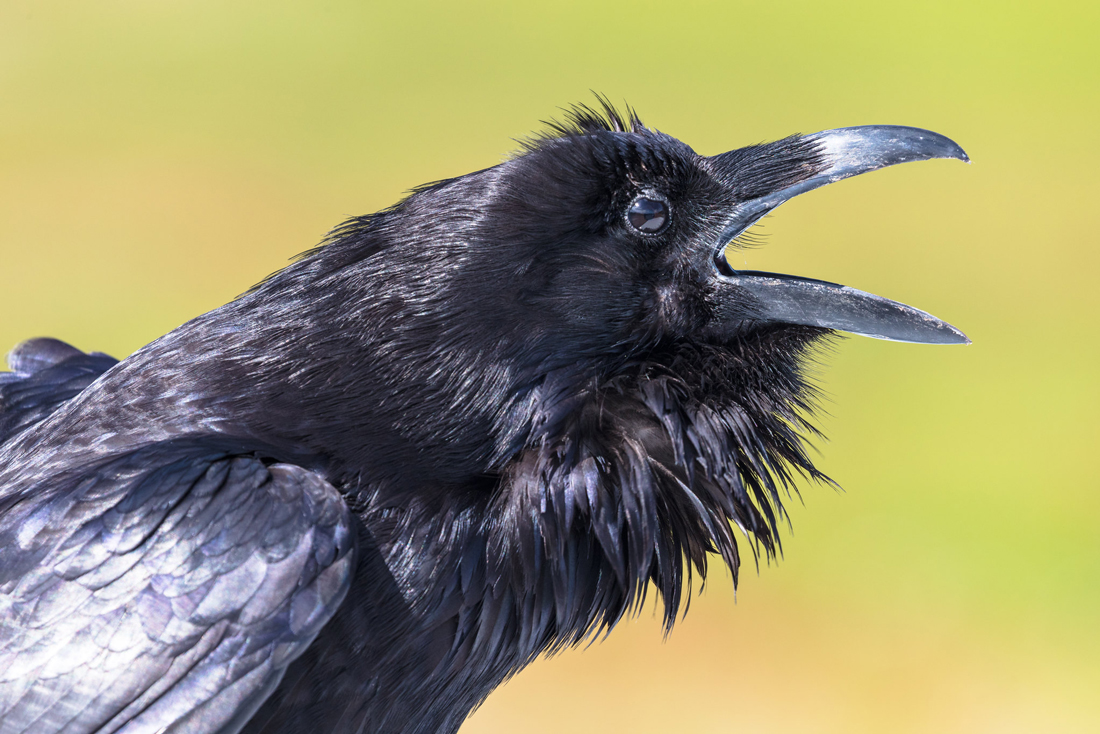
Do They Sing?
It may surprise some of you to learn that ravens are the largest species of Passeriformes in the world. This order is commonly known as perching birds, though less accurately, sometimes songbirds. I can imagine that some of you are thinking, “songbird?” Generally, most people do not consider the raven’s calls very melodic. So, we’ll stick with perching birds, but examine their calls a little more closely.
The most common call you may hear is a croak that may rise in pitch. Nevertheless, ravens make so many more vocalizations. Listen to some of their various sounds. A few of these may surprise you.
Bird sounds – Common Ravens talking
https://www.youtube.com/watch?v=Lfwhc7iRWL4
Interesting Sounds Made by Common Ravens https://www.youtube.com/watch?v=ND_eUt3ZR_Y
But even these are not their only sounds as they have an amazingly wide repertoire. Examples include whistles, mews, shrill high-pitched alarm cries, and knocking sounds. They also imitate sounds such as dripping water, mimic other birds, and even learn to speak words in human languages.
Though the number of sounds is debatable, the University of Alaska’s, Geophysical Institute reports that researchers have identified up to 116 different raven vocalizations. Follow this link to the institute’s short article, Making Sense of Raven Talk https://www.gi.alaska.edu/alaska-science-forum/making-sense-raven-talk
So . . . do they sing? It all depends on your definition of singing. They certainly seem to have a lot of sounds to express themselves with.
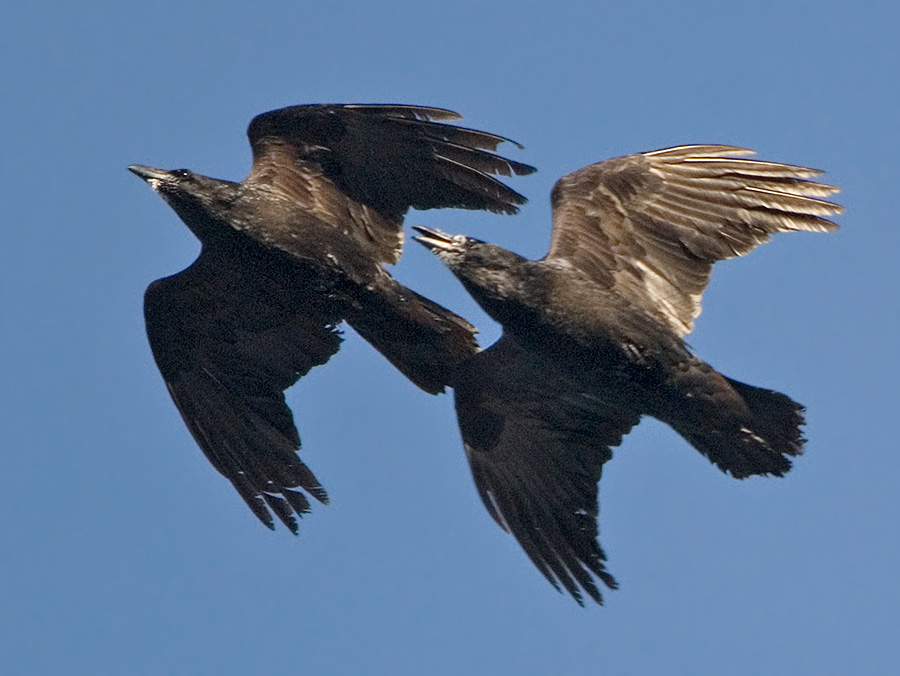
They are Acrobats
Ravens are a marvel to watch as they, at times, appear to perform acrobatics while in flight. They are outstanding flyers. They seem to often move very quickly and may dive repeatedly. I have seen pairs in courtship flying in unison, sometimes side-by-side with wingtips seemingly touching. They will dive and tumble together. I have seen them turn upside down. They will also do rolls and somersaults. At times it looks like they are just having fun.
Below are a couple of videos of ravens in fight.
Acrobatic Raven on Westside Trail
https://www.youtube.com/watch?v=_jyu2Zj-BR0
Raven Acrobatic Flight in Grand Canyon (Arizona)
https://www.youtube.com/watch?v=p-GTVJB-Shw
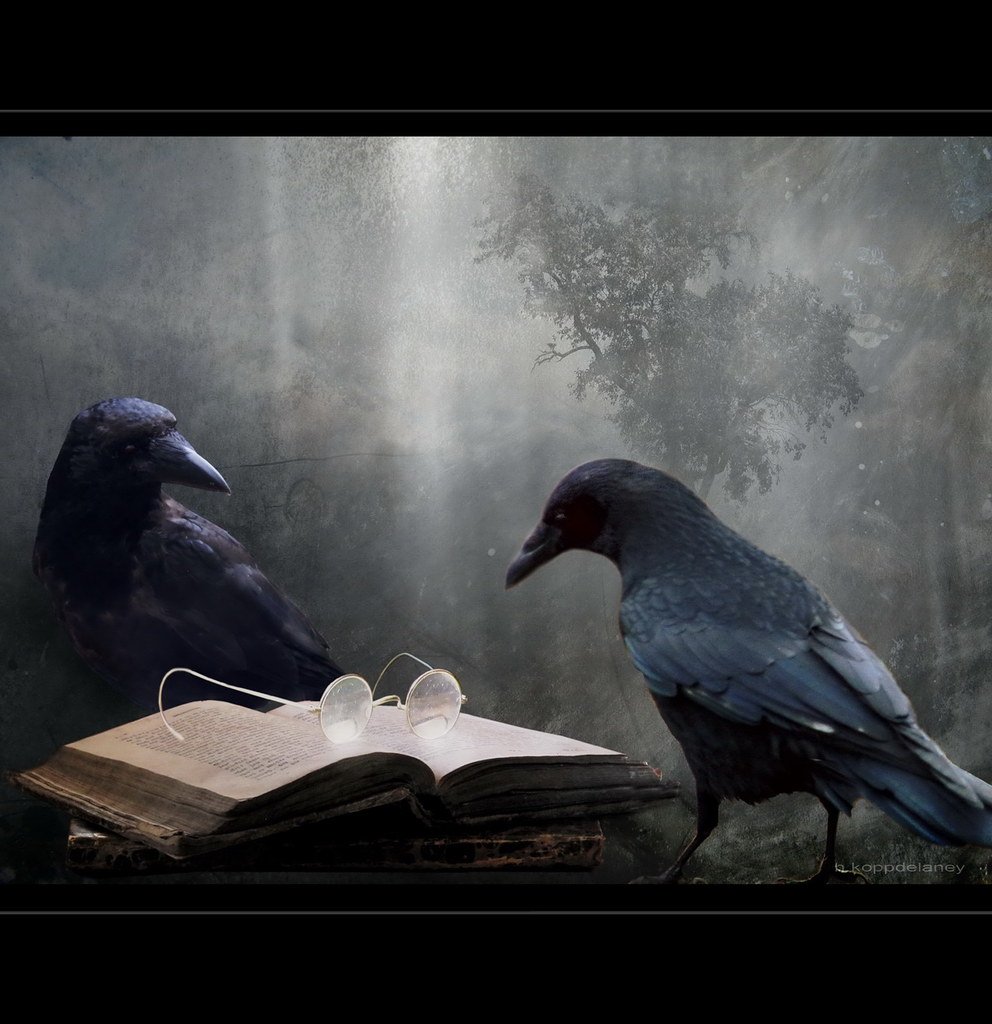
Ravens Are Very Intelligent
Ravens can solve problems, recognize different individuals (including humans), and learn new behaviors by observing others. They are playful and have been seen in flight carrying objects such as sticks which they may trade back and forth with others. In addition, they play their own games by dropping and retrieving objects while in flight. They seem to enjoy sliding down snow covered hills and roofs. They will even appear to interact with other animals in a playful way, including wolves.
Check out my blog, “Ravens and Wolves – Friends or Enemies” https://centerofthewest.org/2022/10/13/ravens-and-wolves-friends-or-enemies/
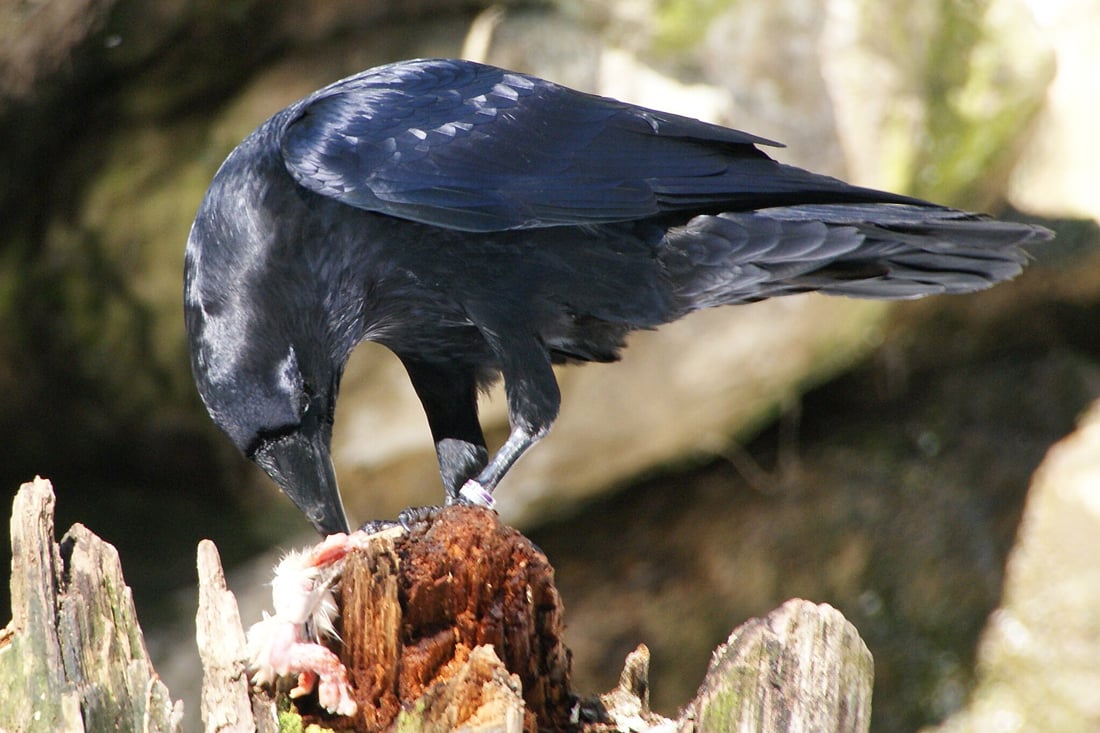
Food Habits
Some people dislike ravens because of their food habits. They will feed on almost anything including plants and animals, carcasses, and garbage. As a result, these excellent scavengers help to keep our environment cleaner.
As predators they will kill and eat small animals such as rodents, frogs, lizards, fish, scorpions, and insects. They will also raid bird nests, eating the eggs as well as the chicks. This, in particular, often upsets people, yet many of the same people love owls that likewise prey on other animals – including other owl species and chicks. Though it is sad, it is a natural part of life for survival.
Ravens will often hide (cache) food for later meals. They may even watch other ravens hide food then raid the other bird’s cache when the original bird is absent.
For additional information on caching, follow this link to my earlier blog, Caching in Birds: What it is, the Why and How https://centerofthewest.org/2021/06/06/caching-in-birds-what-it-is-why-and-how/
Mated pairs of Common Ravens normally stay together all year. Even after the breeding season is over they will continue to defend their territory from other ravens. If a young raven discovers a carcass it will often call other ravens to the find. Scientists believe the unmated pairs gather in this way so that their numbers will discourage local territory owners from gaining dominant access to the food.
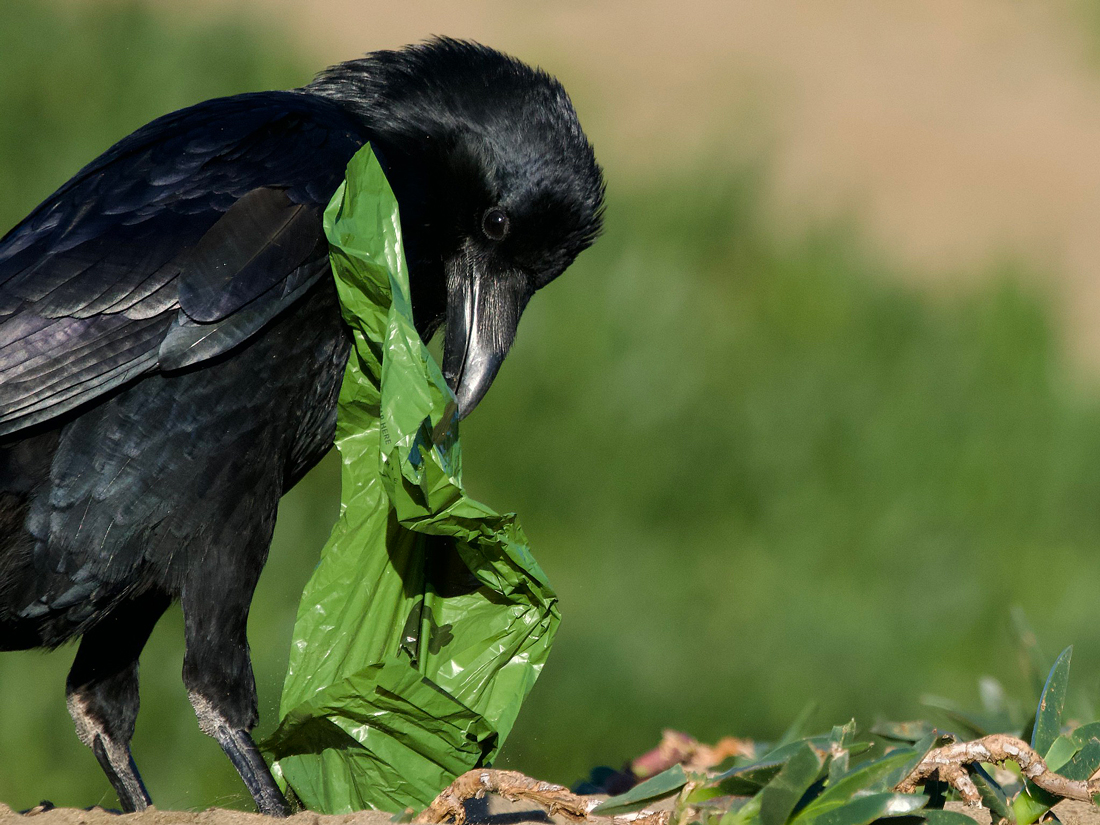
Do They Cause Problems for Humans?
A number of corvids (ravens, magpies, crows, jays as examples) have been hated and even persecuted due to their reputation of damaging man’s crops or livestock. They have been observed killing sickly young farm animals. However, it is more often that as scavengers they are feeding on animals killed by other predators, animals born dead, or that have died soon after birth.
Furthermore, ravens can be a nuisance. They will often collect around garbage, tearing into bags and spreading the garbage around. They may also steal food left out for dogs and cats. Ravens can even open tents to get at food left inside. Plus, at times they will steal golf balls. Although these behaviors may cause some frustration, one can prevent most of these by carefully storing garbage in closed containers, not leaving food unattended, and feeding pets inside.
Unfortunately, Ravens sometimes prey on threatened species. Scientists have spent a lot of time trying to prevent the ravens from preying on these species, but have only had mixed success.
Be aware that the Migratory Bird Treaty between the United States, Canada and Mexico was amended in 1972 to include the Corvids, thus giving federal protection to these species. For this reason you can not trap, kill, or harass them.
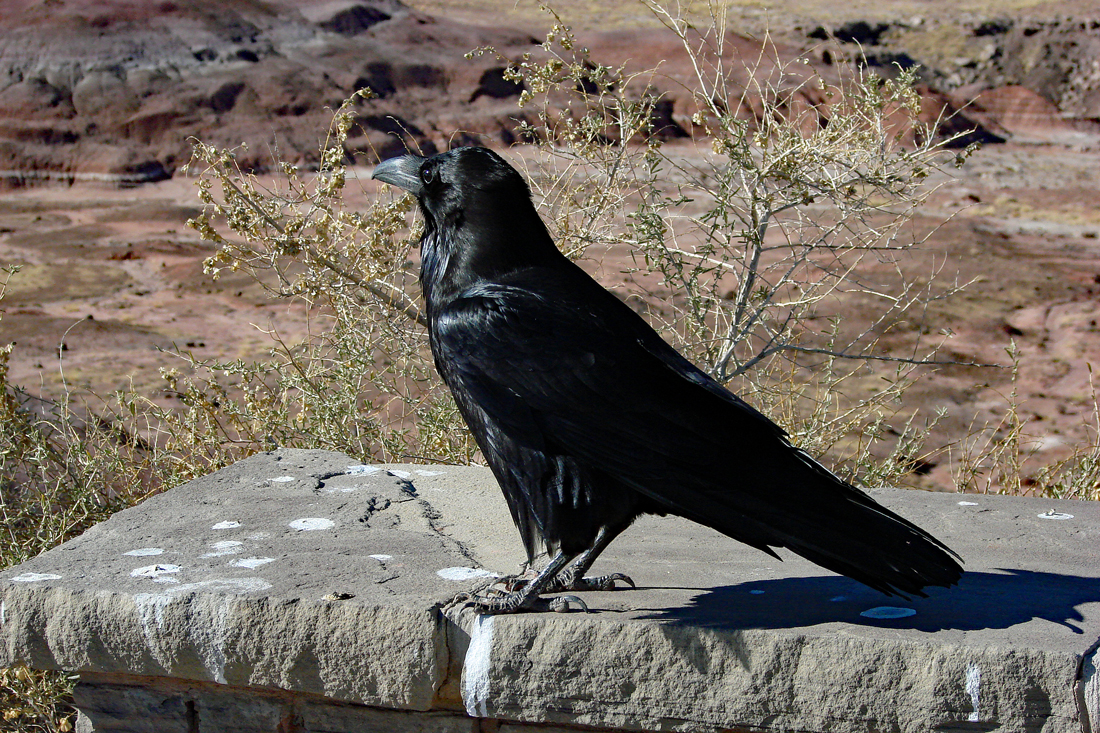
In Conclusion
For centuries Common Ravens have interacted with people throughout their range – which covers most of the Northern Hemisphere. At times this is a positive interaction, but in other instances a conflicting one. In either case, they are only behaving in a natural way.
Ravens have learned that where there are people, there may be food. Historically, they learned that following wagons, sleds, and hunting parties might offer up a quick meal. Today you may find them hanging around parking lots or near picnic areas and parks due to visitors offering them food or being careless about leaving food out.
Ravens are among the smartest of all birds and will take advantage of a meal when the opportunity arises. Ravens may even approach and beg from you. In National Parks as well as many state parks feeding wildlife is illegal and doing so will only reinforce this undesirable raven behavior.
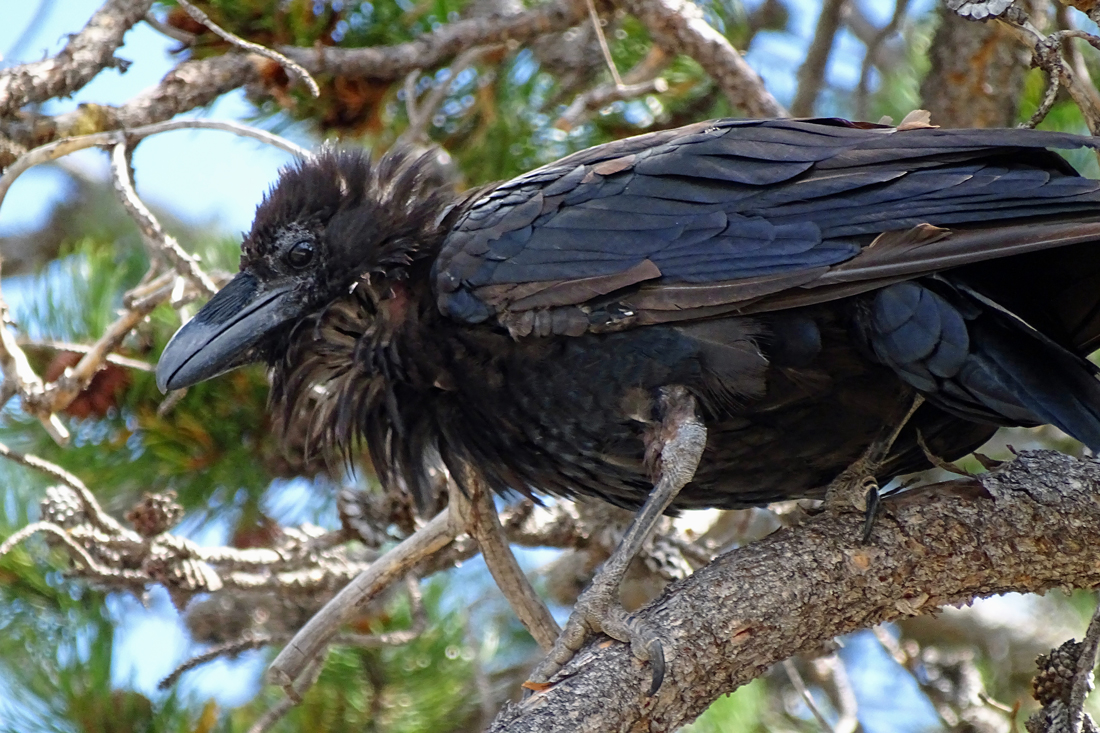
And Lastly
A True Story About Ravens and Yellowstone Tourists
Below is an interesting observation of how ravens will learn and take advantage of us when food is available. A few years ago I was standing in the garden of the Buffalo Bill Center of the West showing off Isham, our Red-tailed hawk, when a visitor told me this story about an observation he had in the parking lot of one of Yellowstone’s geyser basins.
As he and his wife headed for the basin trails, they saw a couple of ravens come in and land on a couple of BMW motorcycle seats. The ravens began examining a pack on one of the bikes. Then one of the ravens unzipped the pack and began to go through its contents, throwing items out onto the pavement. Soon, it found a package of food which they tore into. The fellow I was talking to took a number of photos of the ravens and their activity.
As they entered the geyser basin area, they saw a couple of men dressed in motorcycle leathers, and stopped to ask if they had a couple of BMW bikes out in the parking lot. When they said yes, my visitor told them that a couple of ravens were raiding their pack, and eating their food. The bikers said it couldn’t be their bikes, until my visitor showed them his photos. Then the bikers took off on a run toward the parking area.
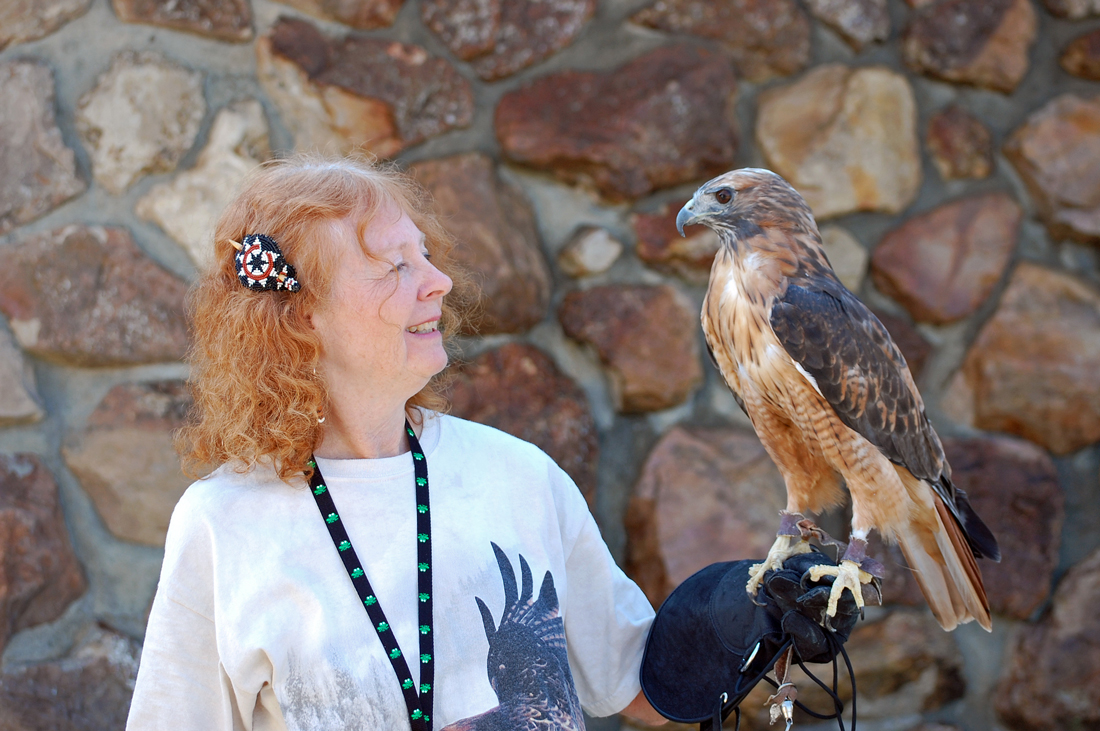
Photos:
Raven calling along the Firehole River, NPS/Jacob W. Frank, Public Domain https://www.flickr.com/photos/yellowstonenps/42290283854/in/gallery-157982666@N07-72157666459889679/
Two ravens in flight by Sergey Yeliseev, Attribution-NonCommercial-NoDerivs 2.0 Generic license, https://www.flickr.com/photos/yeliseev/
Ravens with book by Hartwig HKD, Attribution-NoDerivs 2.0 Generic license, https://www.flickr.com/photos/h-k-d/
Common Raven with prey in Bayerischer Wald National Park, by Aconcagua, Wikimedia Creative Commons Attribution-Share Alike 3.0 license, https://upload.wikimedia.org/wikipedia/commons/5/5a/Common_Raven_Nationalpark_Bayerischer_Wald_01.jpg
Raven with green dog waste bag by Ingrid V Taylar, Attribution 2.0 Generic license, https://www.flickr.com/photos/taylar/
Isham and I in 2011, property of the Draper Museum Raptor Experience, https://centerofthewest.org/raptor-experience/
Raven in Painted Desert National Park and Raven at Old Faithful in Yellowstone by author, Anne Hay, https://www.flickr.com/photos/157982666@N07/





